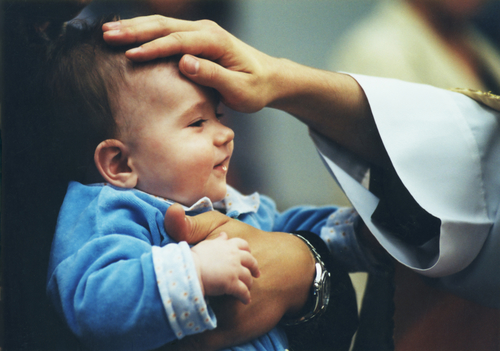“The liturgy is the source for achieving in the most effective way possible human sanctification and God’s glorification, the end to which all the Church’s other activities are directed.” (Constitution on the Sacred Liturgy, Second Vatican Council, 1963, no. 10).
As liturgical people, our task in life is to open up the world around us to the extraordinary presence of God in all things and all creatures. With our participation at Mass each Sunday, we join in this process of sanctification, making God’s life our life, making our life God’s life. The more we participate in the process, the more we become the process in our everyday lives. Archbishop Gomez, in his recent writing, reminded us of how St. Athanasius instructed on this in his words from the 4th century: “For the Son of God became man so that we might become God.” Our participation in the life of Christ sets us on this path of ongoing and ever-expanding divinization.
Sunday liturgy gives us our vision and purpose to work for sanctification throughout the week. We not only “keep holy the Sabbath,” we keep holy every moment of every day. For the major moments in our lives, we have the designated sacraments (Baptism, Eucharist, Confirmation, Matrimony, Holy Orders, Reconciliation, and Anointing of the Sick). To sanctify the smaller, but still significant moments in our lives, we have the church’s ritual Book of Blessings (BB), and its smaller volume, Shorter Book of Blessings, as well as the Catholic Household Blessing and Prayers.
Some of the moments of prayer for a community gathered that are included in the complete Book of Blessings are: Blessing of a Family, a Married Couple, an Engaged Couple, a Mother before or after Childbirth, on the Occasion of a Birthday, Blessing of Persons Suffering from an Addiction or from Substance Abuse, Blessing of Travelers, of Students and Teachers, Blessing of a New Building or Home, Office, Shop, Factory, Blessing of Field or Flocks, Blessing of Religious Articles, of an Advent Wreath, Christmas Manger, Christmas Tree. The list goes on.
It is in the Book of Blessings that we also find the Blessing of Throats on the Feast of St. Blasé, the Blessing of Animals, the Order for the Blessing and Distribution of Ashes, the Blessing of St. Joseph’s Table, and the Installation of a New Pastor.
In the Book of Blessings, each ritual prayer follows the same general outline, and can be led by a priest or deacon. Some can be led by a lay minister.
Introductory Rites — the sign of the cross, greeting and opening comments, offering a deeper understanding of God’s presence in our lives found in and through this given moment; a Scripture Reading, followed by a psalm, hymn or other song familiar to those gathered. It is optional to offer a homily.
Intercessions suited to the occasion: The Prayer of Blessing with some form of ritual action accompanying or concluding the prayer “outward signs or gestures that are especially employed are: the outstretching, raising, or joining of the hands, the laying on of hands, the sign of the cross, the sprinkling with holy water and incensation” (BB No. 25).
Concluding Rite — a blessing. At the conclusion of most of the rituals it states: “It is preferable to end the celebration with a suitable song.” As with all Sunday liturgies, the song of the people gathered is an integral part of their participation. Song and silence should always be included.
The option to shorten the ritual is provided, with the directive that the Scripture and Prayer of Blessing be the minimum content.
The Catholic Household Book of Blessings offers ritual prayer for moments in the life of a family at home, especially families with children. This resource brings the ritual prayer into the home. Sections of the book include: a simple form of the Liturgy of the Hours, prayers for the feasts and seasons of the liturgical year, family prayers from birth to death, prayers for discernment and decision making, prayers for school, work, and weather, blessings of objects, prayers for persons with disabilities, for social justice, prayer in times of need, Stations of the Cross, and so much more.
In 1979, Fr. Ed Hays published his Prayers for the Domestic Church: A Handbook for Worship in the Home, which is a similar resource for families, and in recent years many other same such resources have become available, as well as a number of online services to assist families with ritual prayer in the home.
Start your day with Always Forward, our award-winning e-newsletter. Get this smart, handpicked selection of the day’s top news, analysis, and opinion, delivered to your inbox. Sign up absolutely free today!

